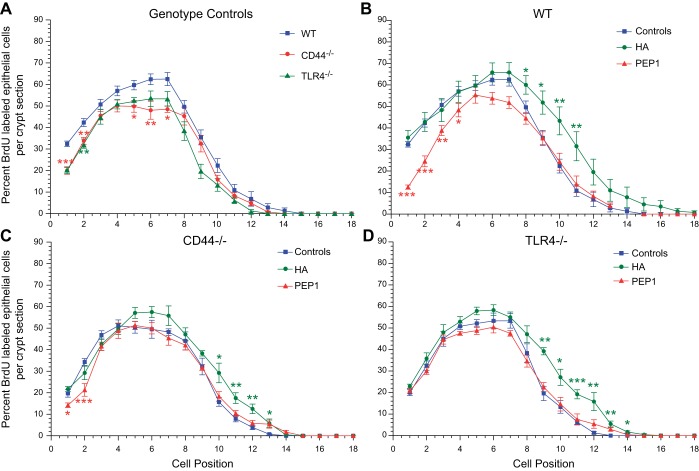Fig. 8.
Positional distribution of BrdU-labeled proliferating small intestinal crypt epithelial cells in postnatal day 14 WT, CD44−/−, and TLR4−/− mice. In all 3 genotypes and in all treatment groups, the highest rate of epithelial cell proliferation was in the range of position 4 to position 7, with gradually decreasing proliferation at positions higher in the crypt. Effect of genotype was measured. A: at baseline positional proliferation in 14-day-old CD44−/− and TLR4−/− mice was significantly lower in the crypt base (positions 1–4) compared with WT mice. In CD44−/− mice, this significantly reduced proliferation extended up to position 7. Effect of treatment was measured. B–D: treatment with intraperitoneal HA from age 7 days to age 14 days resulted in significant increases in positional epithelial cell proliferation in the upper half of the intestinal crypt (positions 8–12) in WT, CD44−/−, and TLR4−/− mice but had no effect in the crypt base in any of these genotypes. Administration of PEP-1 using the same regimen resulted in decreased positional epithelial cell proliferation in the crypt base in WT and CD44−/− mice, but PEP-1 had no effect on positional epithelial cell proliferation in TLR4−/− mice. Values are means ± SE for 10–15 WT, 6 CD44−/−, and 6 TLR4−/− mice per treatment group. *P < 0.03, **P < 0.005, ***P < 0.0001 compared with control.

